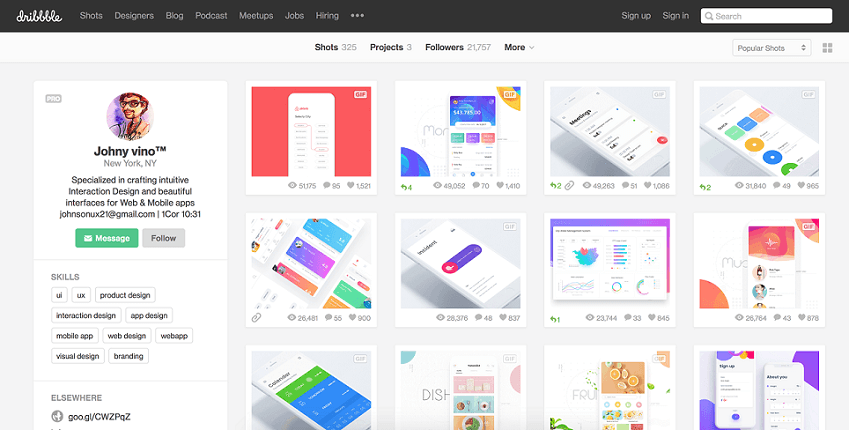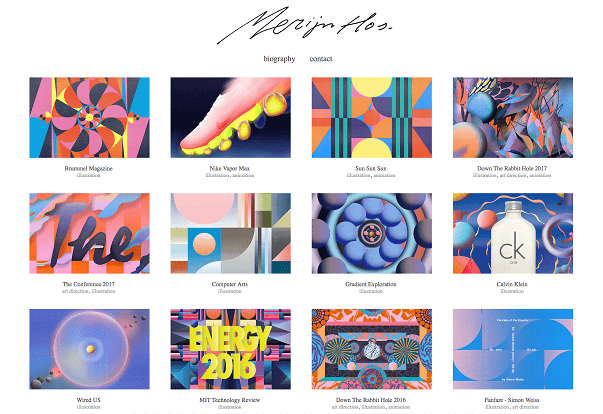Creative freelancers have an advantage over other types of service providers; you can easily show potential clients what you’re capable of when submitting a scope of work, quotation template, or proposal template. Most creative designers do this with the use of a portfolio. Here is everything you should know about putting your freelance design portfolio together for the first time, as well as polishing up your existing portfolio for the best possible presentation!
What Should a Freelance Design Portfolio Include?
There is a temptation to include every job you’ve ever done in your portfolio, but this may not be your best option. In fact, it’s best to really consider your USP (Unique Selling Proposal) and consider showcasing work that carefully aligns with this branding position. If you're amazing at creating such infographic templates, then you should definitely share them. If you want to differentiate yourself as a talented designer with a specific set of skills, make sure the bulk of your featured work is an example of this.
On the flipside, avoid showcase portfolio pieces for tasks you hate doing. Sure, you may be skilled in a particular software, but if you’re determined to not have to work with it again, it’s wise to avoid even offering it as an example in the first place. Make your portfolio reflect the work you want.
Be mindful of industry goals. For example, if you’re looking to attract clients in the non-profit space, feature work you’ve done with charities at the most prominent place on your portfolio site. If you’re hoping to get into green technology, look for work you’ve done that aligns with that mission (other tech projects or environmental design work, for example.)

What If Experience is Limited?
Before you start thinking about how to build a design portfolio, keep in mind that the biggest challenge for a freelance portfolio is showcasing work you haven’t done yet. If you’re hoping to get into green tech, and you haven’t actually done anything in that space, you won’t have examples to show. Likewise, the newer designer will have a very limited set of samples to highlight and may feel that they have to display everything they’ve done – relevant, or not.
In truth, it’s sometimes better to show your best, most applicable work, then to appear that you’re more experienced. That’s because people reach out to designers who embody the work they are looking to have done. If they connect to your past projects (however scarce they seem to be), it will not matter that you don’t have 100’s of examples to show. One very relevant past project has more value to prospecting than a dozen that don’t quite hit the mark.
If you don’t have any professional samples that communicate your mission, it’s OK to do some samples for yourself. A few mock-ups in the desired tech, software, or style of your USP is always a good idea. It is never wasted time, as it also gives you additional practice in the skills you’ll need for future work!

What about Client Privacy?
While most freelancers assume that it’s always OK to showcase work you’ve done, it’s important to pay attention to privacy terms. Your graphic design contract should provide language that allows you to show screenshots or thumbnails of pages you’ve developed, for example. You should have no resistance to this, assuming they are a traditional business client. In fact, some will be happy to be featured by a talented freelancer, as it might send traffic to their business site, too!
There may be an instance in your career, where it isn’t possible, however. A government client or someone dealing with proprietary technology may not be comfortable having you feature them on their site. They may also be asking you to do work for them as a contractor who appears to operating under their corporate umbrella. To appear that all work is done in-house, they may have you agree to confidentially terms that state you cannot tell others you did their design work.
While this isn’t a common occurrence, it’s wise to get their terms up front and know exactly what you can and can’t share. If they don’t let you share their name or pictures of your work, you can always list them in a generic, non-identifiable way in your client list. Something like “automotive AI developer” – without naming their name – shows that you’ve worked in that industry and counts as experience. (Vague work still counts as work.)

Should You Have One?
Yes. There really is no realistic situation where a design portfolio would be a negative for your freelance business. Even if you are brand-new and have little work, it’s good to start building one right away. Whether you choose to prominently display it, however, is another issue.
Some new freelancers use their portfolio as an internal holding area for their work that they add to over time. They may choose to show it to prospects only after they get to the point of sending a proposal. While the eventual goal should be to have your portfolio open for anyone to see (preferably on your business website), you can choose to only supply your samples upon request. Eventually, you should have enough work or your own samples to prominently display to everyone at all times.
What Technology Should You Use?
Opinions are mixed on the best way to create your design portfolio, and many ask how to make a graphic design portfolio to impress. The savviest freelancers can find a way to create a custom portfolio that utilizes the very technology they use in future client contracts. For the sake of time and effort, however, many just use some of the built-in portfolio features of typical web-site builders to display thumbnails and descriptions of their work.
Common ways designers build and host their own portfolios include:
You can also use the existing technology for a marketplace site to create your portfolio. These options are usually already set up to easily upload your designs and descriptions, plus you will be featured alongside thousands of successful freelancers, too. Many businesses looking for designers check here first. You don’t have to worry about hosting fees or optimizing SEO for search.
The negatives to having a site host your work like this is that they do have the right to share some of your portfolio. They also are the ones responsible for keeping your work displayed. If they change their business model down the road, or go out of business altogether, your portfolio will go with them. You will then need to recreate what you’ve done on their site for your own needs. (That’s why it is highly recommended you make a copy of everything you share on a hosted portfolio site.)
Some freelancers also believe that self-hosted options (WordPress, etc.) are more professional. Putting a custom domain with your URL on your business card instead of a Dribbble URL, for example, may give a better impression to new prospects.
What Makes a Freelance Design Portfolio Great?
Regardless of where you host your portfolio, there are some basic questions you should ask before you place any of your work to be featured. Your work should meet most (if not all) of these requirements to make the cut:
- Does this work represent the kind of work I want to do more of?
- Can someone view this work and see what my skills are?
- Does this work speak to the industry or customer I most want to serve?
- Will this work honor client privacy agreements?
- If prospects knew nothing else about me, will this sample say what needs to be said?
- Am I proud of this work?
As you advance in your design career, you’ll continually add more work (and remove other work) to craft the perfect branding message you want to impress upon visitors. Just be sure to be selective in what you showcase. A portfolio is, after all, a curated selection of your best talents. Use that space for only your most amazing projects.
Use Bonsai and apply your branding to proposals, contracts, and invoices - sign up for a free trial today.







